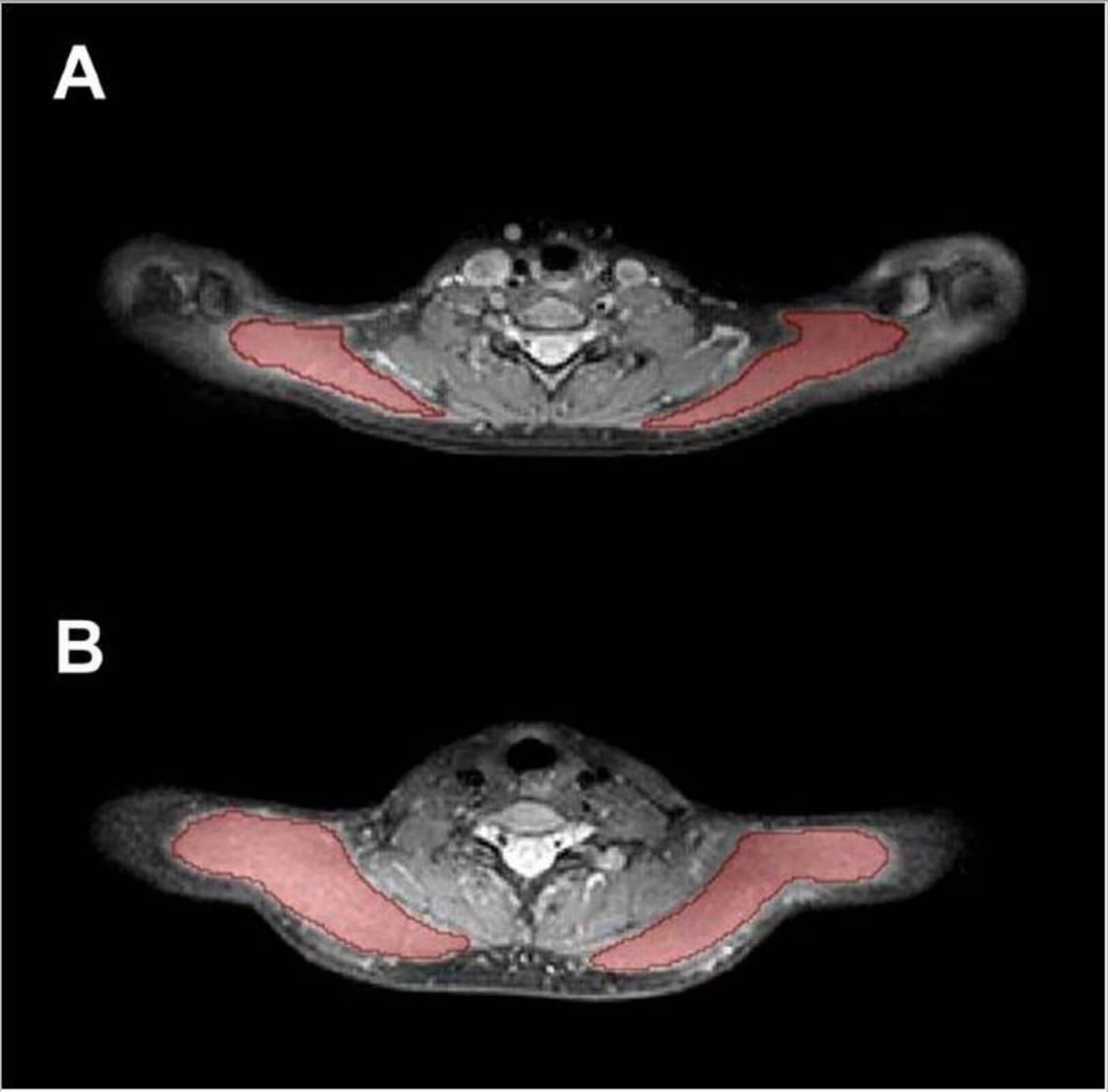CHICAGO — Having a headache is a pain in the neck. Now, researchers are revealing that’s literally what’s happening. In a new study, German scientists are shedding light on the involvement of neck muscles in primary headaches, offering potential avenues for improved treatments.
“Our imaging approach provides first objective evidence for the very frequent involvement of the neck muscles in primary headaches, such as neck pain in migraine or tension-type headache, using the ability to quantify subtle inflammation within muscles,” says Dr. Nico Sollmann, M.D., resident in the Department of Diagnostic and Interventional Radiology at University Hospital Ulm and the Department of Diagnostic and Interventional Neuroradiology at University Hospital Rechts der Isar in Munich, in a media release.
Primary headaches, like tension-type headaches and migraines, affect millions worldwide, yet their exact causes remain elusive. Tension-type headaches, experienced by two-thirds of U.S. adults, are often linked to stress and muscle tension, causing mild to moderate dull pain on both sides of the head.

On the other hand, migraines, characterized by severe throbbing pain often localized on one side of the head, impact over 37 million Americans and up to 148 million people globally, according to the American Migraine Foundation.
Dr. Sollmann and his team focused on understanding the role of the trapezius muscles in these headache disorders. They employed quantitative magnetic resonance imaging (MRI) to investigate muscle inflammation, particularly in cases of tension-type headaches and migraines associated with neck pain.
Their study included 50 participants, mainly women between the ages of 20 and 31. Among them, 16 had tension-type headaches, 12 had tension-type headaches along with migraines, and 22 were healthy controls.
Through 3D turbo spin-echo MRI scans, researchers analyzed the trapezius muscles and measured muscle T2 values, exploring connections with headache frequency, neck pain, and myofascial trigger points.
The group experiencing both tension-type headaches and migraines showed notably higher muscle T2 values, which correlated significantly with increased headache days and reported neck pain. These heightened T2 values potentially indicate nervous system-related inflammation and heightened sensitivity in the muscle tissues.

“The quantified inflammatory changes of neck muscles significantly correlate with the number of days lived with headache and the presence of subjectively perceived neck pain,” notes Dr. Sollmann. “Those changes allow us to differentiate between healthy individuals and patients suffering from primary headaches.”
The findings suggest that assessing muscle T2 values could assist in identifying and monitoring treatment effects for patients with primary headaches.
“Our findings support the role of neck muscles in the pathophysiology of primary headaches,” says Dr. Sollmann. “Therefore, treatments that target the neck muscles could lead to a simultaneous relief of neck pain, as well as headache.”
Dr. Sollman emphasized the potential of non-invasive treatments targeting the neck muscles as potentially safer and more effective than systemic drugs.
“Our imaging approach with delivery of an objective biomarker could facilitate therapy monitoring and patient selection for certain treatments in the near future,” adds Dr. Sollman.
The study was presented at the annual meeting of the Radiological Society of North America in Chicago.

